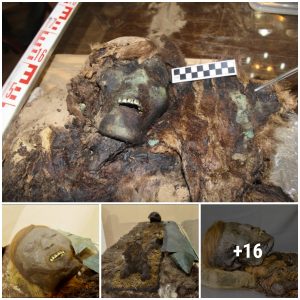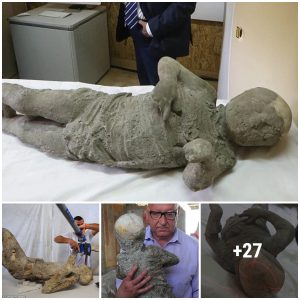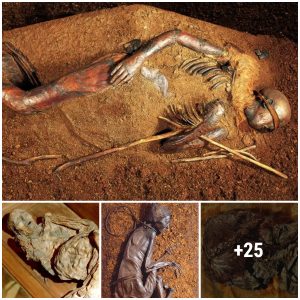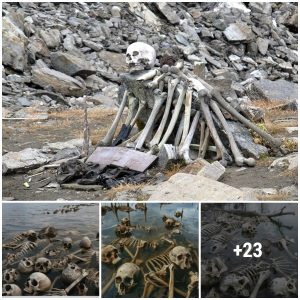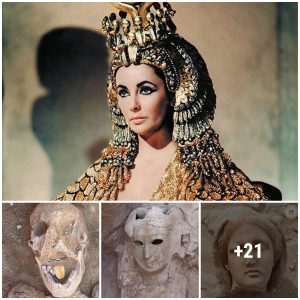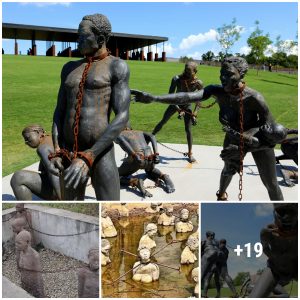In Russia, the intricate patterns of 2,500-year-old tattoos – some from the body of a permafrost-preserved Siberian ‘princess’ – have been discovered.
Mythological creatures are included in the remarkable body art and experts believe the elaborate drawings were a sign of age and status for the ancient nomadic Pazyryk people, mentioned by the Greek historian Herodotus in the 5th century BC.

But Natalia Polosmak, a scientist who found the remains of the ‘Princess Ukok’ ice-clad high in the Altai Mountains, is also struck about how little has changed in more than two millennia.
‘I think we have not moved far from Pazyryks in how the tattoos are made,’ she told the Siberian Times ( SiberianTimes.com ).
‘It is still about a craving to make yourself as beautiful as possible.’ ‘For example, about the British.

‘A lot of them go on holiday to Greece, and when I’ve been there I heard how Greeks were smiling and saying that a British man’s age can be easily understood by the number of tattoos on his body.
‘I’m talking the working class now. ‘And I noticed it, too. ‘The older a person, the more tattoos are on his body.’
Dr Polosmak added: ‘We can say that most likely there was – and is – one place on the body for everyone to start putting the tattoos on, and it was a left shoulder.
‘I can assume so because all the mummies we found with just one tattoo had it on their left shoulders.

‘And nowadays this is the same place where people try to put the tattoos on, thousands of years on.
‘I think its linked to the body composition – as the left shoulder is the place where it is noticeable most, where it looks the most beautiful.
‘Nothing changes with years, the body stays the same, and the person making a tattoo now is getting closer to his ancestors than he or she may realise.’

The tattoo patterns are from the ancient ‘princess’ who died at around the age of 25 – and from two warriors found on an ancient permafrost burial site at Ukok Plateau some 2,500 metres above sea level close to Russia’s frontiers with modern day Mongolia, China and Kazakhstan.
The reconstruction of the tattoos in the images shown here were released to coincide with the moving of the remains of the princess, dug out of the ice 19 year ago, to a permanent glass sarcophagus in the National Museum in Gorno-Altaisk, capital of the Altai Republic.
Eventually she will be displayed to tourists.
Buried around her were six horses, saddled and bridled, her spiritual escorts to the next world, and a symbol of her evident status, though experts are divided on whether she was a royal or a revered folk tale narrator, a healer or a holy woman.

Next to hear body was a meal of sheep and horse meat and ornaments made from felt, wood, bronze and gold. And a small container of cannabis, say some accounts, along with a stone plate on which were the burned seeds of coriander.
‘Tattoos were used as a mean of personal identification – like a passport now, if you like,’ said Dr Polosmak.‘The Pazyryks also believed the tattoos would be helpful in another life, making it easy for the people of the same family and culture to find each other after death.
‘Pazyryks repeated the same images of animals in other types of art, which is considered to be like a language of animal images, which represented their thoughts.’The tattoos were ‘used to express some thoughts and to define one’s position both in society, and in the world.
The more tattoos were on the body, the longer it meant the person lived, and the higher was his position.
‘For example the body of one man, which was found earlier in the 20th century, had his entire body covered with tattoos, as you see on the picture of his torso,’ said Dr Polosmak.
‘Our young woman – the princess – has only her two arms tattooed. So they signified both age and status.’
The Siberian Times said: “The tattoos on the left shoulder of the ‘princess’ show a mythological animal – a deer with a griffon’s beak and a Capricorn’s antlers.
‘The antlers are decorated with the heads of griffons. ‘And the same griffon’s head is shown on the back of the animal. The mouth of a spotted panther with a long tail is seen at the legs of a sheep.
‘She also has a dear’s head on her wrist, with big antlers. ‘There is a drawing on the animal’s body on a thumb on her left hand.

‘On the man found close to the ‘princess’, the tattoos include the same fantastical creature, this time covering the right side of his body, across his right shoulder and stretching from his chest to his back.
‘The patterns mirror the tattoos on a much more elaborately covered male body dug from the ice in 1929 whose highly decorated torso in reconstructed in our drawing here.
‘His chest, arms, part of the back and the lower leg are covered with tattoos. There is an argali – a mountain sheep – along with the same dear with griffon’s vulture-like beak, with horns and the back of its head which has griffon’s head and an onager drawn on it.’
